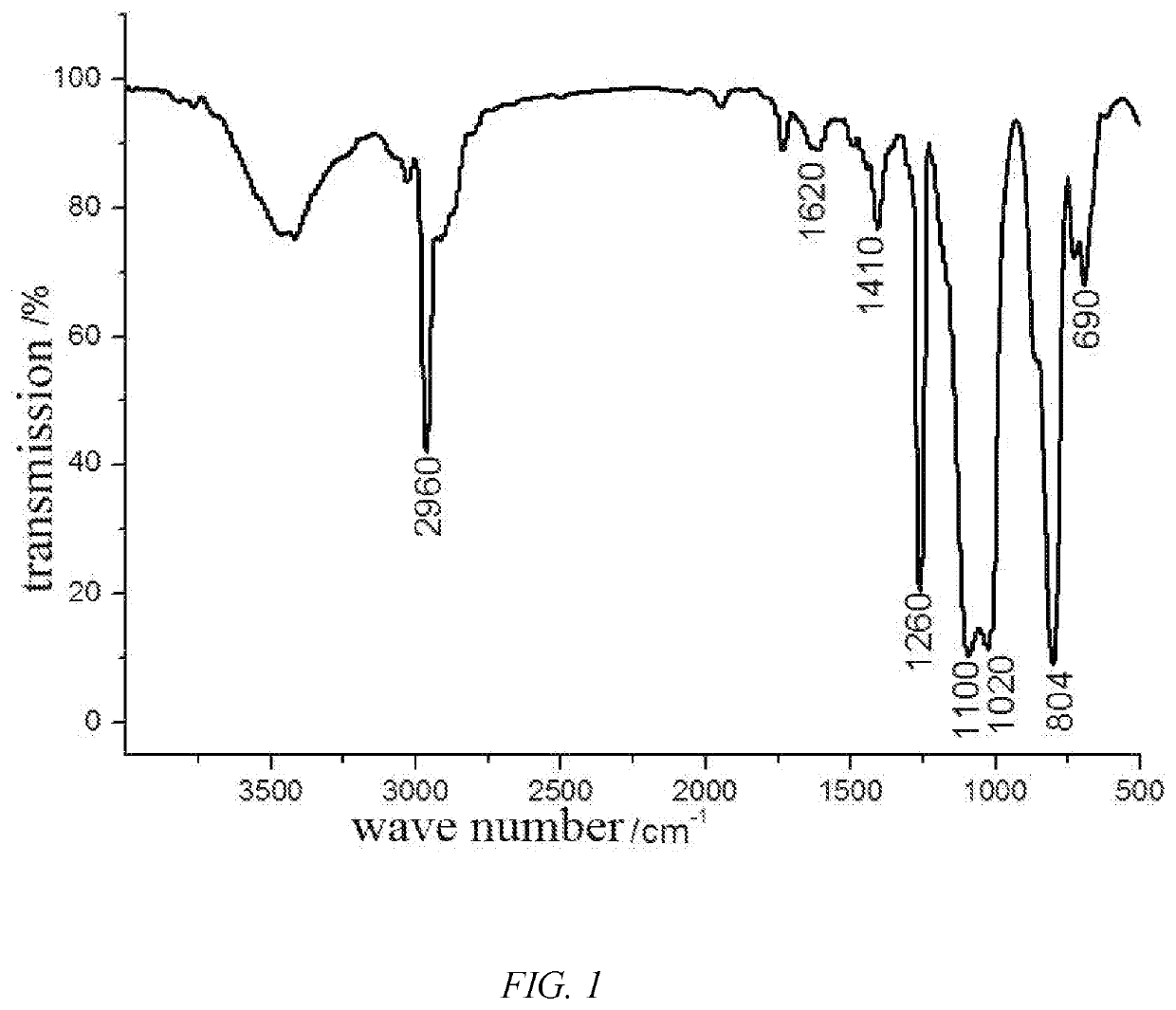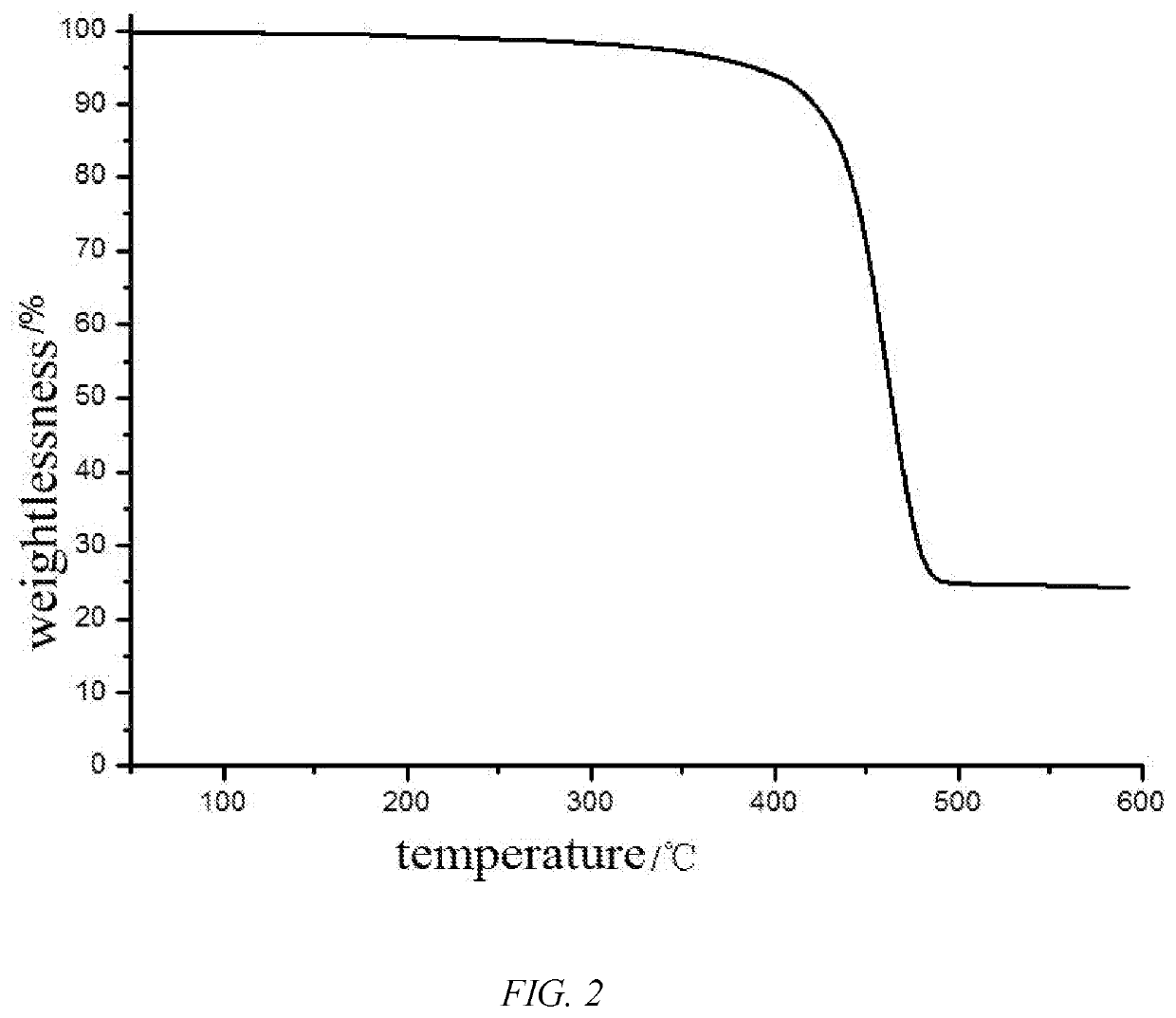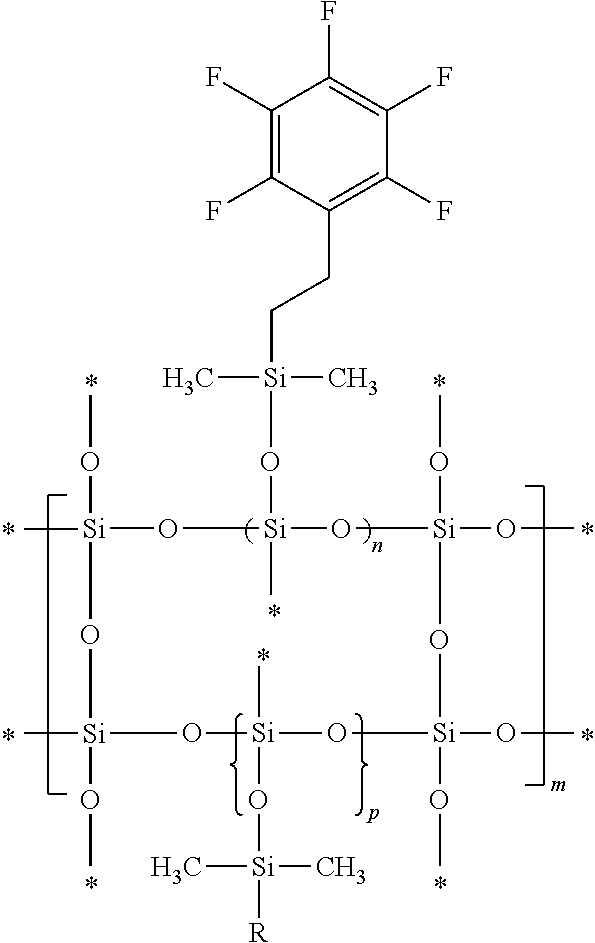Fluorosilicone resin and preparation method thereof
a fluorosilicone resin and high temperature resistance technology, applied in the field of fluorosilicone resin, can solve the problems of limiting the use of silicone resin as a composite component, the silicone resin of the base m structure also undergoes a mass loss of up to 8%, and the heat resistance of the silicone resin, so as to avoid excessive cross-linking, avoid steric hindrance, and excellent heat resistance
- Summary
- Abstract
- Description
- Claims
- Application Information
AI Technical Summary
Benefits of technology
Problems solved by technology
Method used
Image
Examples
example 1
(1) The Synthesis of pentafluorophenethyldimethylchlorosilane
[0039]500 mL three-necked flask equipped with a thermometer, a reflux condenser, and a constant pressure dropping funnel, heating by oil bath. 80 g of toluene and 65 g of pentafluorostyrene were successively added, stirred and dissolved, and 0.26 g of catalyst of chloroplatinic acid was added with protection of N2. The heating was turned on, and after heating to 80° C., 51 g of methyldichlorosilane was added dropwise, and the dropping time was controlled for about 1 hour. After the addition was completed, the reaction was continued for 2 hours. After the reaction, removed the water of solvent and unreacted methyldichlorosilane, collected the fraction at 132° C. (3.75 kPa) by vacuum distillation, to obtain 95 g of pentafluorophenethyldimethylchloroguanidine; The purity of the product was determined by gas chromatography 96.6%, yield of 90.9%.
(2) Polycondensation into Fluorosilicone Resin
[0040]In 100 mL conical flask, 19.4 g...
example 2
(1) The Synthesis Process of pentafluorophenethyldimethylchlorosilane was the Same with Example 1
(2) Polycondensation into Fluorosilicone Resin
[0048]In 250 mL conical flask, 19.4 g of pentafluorophenethyldimethylchlorosilane and 5.5 g of trimethyl chlorosilane and 63 g of tetraethyl orthosilicate were uniform mixed to get the mixed silane was spare.
[0049]500 mL three-necked flask equipped with a thermometer, a reflux condenser, and a constant pressure dropping funnel, heating by oil bath. 8 g of water and 5 g of concentrated sulfuric acid were carefully and slowly introduced into 50 g of tetrahydrofuran, and after heating to 70° C., dropped the mixed silane above, and the dropping time was controlled for about 42 min. After the addition was completed, the reaction was carried out for 6 hours.
[0050]When the reaction was stopped, the reaction liquid was vacuum distillation to remove ethanol and solvent tetrahydrofuran. The temperature of distillation was at 60° C., the degree of vacuu...
example 3
(1) The Synthesis of pentafluorophenethyldimethylchlorosilane
[0055]500 mL three-necked flask equipped with a thermometer, a reflux condenser, and a constant pressure dropping funnel, heating by oil bath. 40 g of trifluoromethylbenzene and 32 g of pentafluorostyrene were successively added, stirred and dissolved, and 0.1 g of catalyst of chloroplatinic acid was added with protection of N2. The heating was turned on, and after heating to 80° C., 26 g of methyldichlorosilane was added dropwise, and the dropping time was controlled for about 1 hour. After the addition was completed, the reaction was continued for 1.5 hours. After the reaction, removed the water of solvent and unreacted methyldichlorosilane, collected the fraction at 132° C. (3.75 kPa) by vacuum distillation, to obtain 46 g of pentafluorophenethyldimethylchloroguanidine; The purity of the product was determined by gas chromatography 95.8%, yield of 84.6%.
(2) Polycondensation into pentafluorophenyl Vinyl Silicone Resin
[00...
PUM
| Property | Measurement | Unit |
|---|---|---|
| temperatures | aaaaa | aaaaa |
| time | aaaaa | aaaaa |
| temperature | aaaaa | aaaaa |
Abstract
Description
Claims
Application Information
 Login to View More
Login to View More - R&D
- Intellectual Property
- Life Sciences
- Materials
- Tech Scout
- Unparalleled Data Quality
- Higher Quality Content
- 60% Fewer Hallucinations
Browse by: Latest US Patents, China's latest patents, Technical Efficacy Thesaurus, Application Domain, Technology Topic, Popular Technical Reports.
© 2025 PatSnap. All rights reserved.Legal|Privacy policy|Modern Slavery Act Transparency Statement|Sitemap|About US| Contact US: help@patsnap.com



